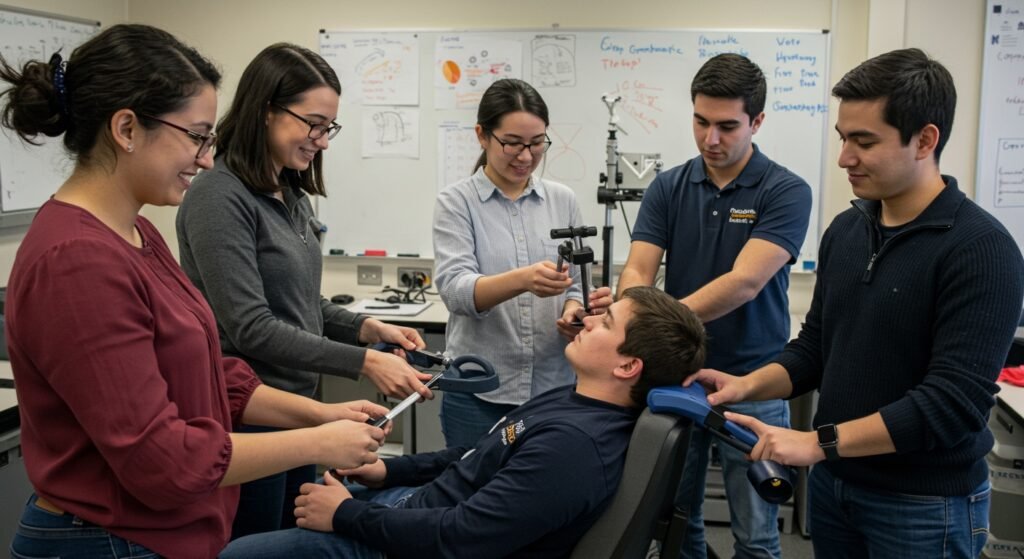Mastering Ergonomics Tools: 7 Essential Devices for BSc Students
For any Bachelor of Science (BSc) student delving into the fascinating fields of industrial engineering, human factors, or occupational health, understanding and utilizing appropriate ergonomics tools is absolutely fundamental. These specialized instruments are not just theoretical concepts; they are the practical means by which future professionals assess, analyze, and improve human-system interactions. Mastering these tools equips students with the skills to identify potential hazards, evaluate workstation designs, and ultimately create safer, more efficient, and healthier environments.
Table of Contents
- Why Ergonomic Assessment is Crucial for BSc Students
- Essential Ergonomics Tools for Your Studies
- How to Effectively Use These Tools
- Beyond the Basics: Advanced Considerations
- Conclusion
Why Ergonomic Assessment is Crucial for BSc Students
The core of ergonomics lies in fitting the job to the person, not the person to the job. This principle is vital in countless industries, from manufacturing to healthcare to office environments. For BSc students, developing a strong foundation in ergonomic assessment means learning to systematically observe, measure, and interpret data related to human capabilities and limitations.
Understanding Human Factors and IE Studies
In human factors, the goal is to optimize the relationship between people and their work environment, considering psychology, physiology, and anthropometry. Industrial engineering (IE) studies, on the other hand, often focus on process optimization, efficiency, and productivity, with ergonomics playing a critical role in preventing injuries and improving worker well-being. Both disciplines heavily rely on accurate data collection, making a solid grasp of various ergonomics tools indispensable.
The Role of Practical Tools in Learning
Theoretical knowledge alone is insufficient. Practical application using real-world instruments allows students to bridge the gap between classroom concepts and actual workplace scenarios. This hands-on experience not only solidifies understanding but also builds confidence in conducting professional assessments post-graduation.
Essential Ergonomics Tools for Your Studies
Here’s a look at some of the most vital ergonomics tools every BSc student should become familiar with:
Basic Measurement Tools
- Goniometers: Used to measure the range of motion of joints (e.g., elbow, knee, wrist). Essential for assessing posture and movement limitations.
- Tape Measures and Rulers: Simple yet critical for measuring workstation dimensions, reach distances, and anthropometric data.
Force Measurement Devices
- Dynamometers: Measure grip strength, pinch strength, and other muscular forces. Important for evaluating task demands and potential for musculoskeletal disorders (MSDs).
- Force Gauges: Used to quantify the force required to operate controls, press buttons, or perform tasks.
Posture and Movement Analysis
- Inclinometers: Measure angles of inclination and declination, often used for assessing neck and back posture.
- Electromyography (EMG) Devices (Basic): While more advanced, some introductory courses may use basic EMG to demonstrate muscle activity during tasks, showing muscle fatigue and strain.
Environmental Monitoring
- Sound Level Meters: Measure noise levels in the workplace to assess potential hearing hazards.
- Light Meters (Lux Meters): Measure illuminance to ensure adequate lighting for tasks and prevent eye strain.
- Thermohygrometers: Measure temperature and humidity, crucial for evaluating thermal comfort in various work settings.
How to Effectively Use These Tools
Knowing which tool to use is only half the battle; understanding how to apply them effectively is key.
Practical Application and Data Collection
Students should learn proper calibration techniques, standardized measurement protocols, and how to record data accurately. This involves practice in various simulated scenarios, from assessing a computer workstation to analyzing a lifting task. The reliability and validity of an ergonomic assessment heavily depend on meticulous data collection.
Analyzing Data and Reporting Findings
Once data is collected, the next step is analysis. This often involves comparing measurements against established ergonomic guidelines and standards. Students must then learn to synthesize these findings into clear, concise reports that identify risks, propose solutions, and justify recommendations based on their observations and measurements.
| Tool | Primary Use | Example Application |
|---|---|---|
| Goniometer | Measures joint angles | Assessing wrist deviation during typing |
| Dynamometer | Measures force/strength | Evaluating grip strength for tool use |
| Inclinometer | Measures angles of body segments | Quantifying neck flexion while working |
| Sound Level Meter | Measures noise levels | Checking decibels in a manufacturing area |
| Light Meter | Measures illumination | Assessing desk lamp brightness |
| Tape Measure | Measures distances/dimensions | Measuring desk height or monitor distance |
Beyond the Basics: Advanced Considerations
As students progress, they will encounter more complex ergonomic challenges. This often involves integrating data from multiple tools and considering psychosocial factors alongside physical ones. For deeper insights into workplace design, check out our guide on Workplace Design Principles, which complements the use of these assessment devices.
Understanding global ergonomic standards is also crucial. For more detailed guidelines on ergonomic standards, refer to OSHA’s Ergonomics Resources, which provide comprehensive information for various industries.
Conclusion
The ability to proficiently use a range of ergonomics tools is a hallmark of a well-rounded BSc graduate in related fields. From basic goniometers to environmental sensors, each tool provides critical data points that inform effective ergonomic interventions. By mastering these instruments, students not only enhance their academic performance but also prepare themselves for impactful careers in creating healthier, safer, and more productive work and living environments.


